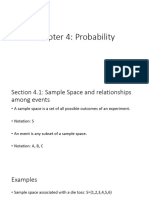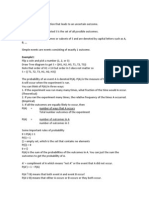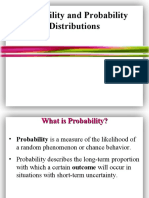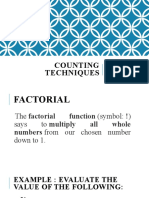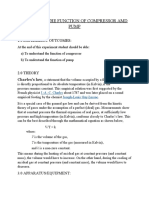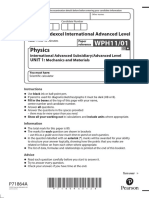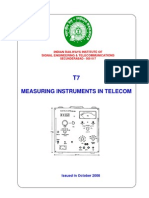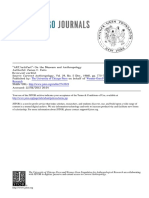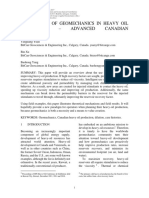0% found this document useful (0 votes)
112 views4 pagesEDA Module 2
The document discusses probability and its applications. It defines probability as the likelihood of an event occurring. It discusses key concepts like sample space, counting rules, permutations, and combinations. Examples are provided to illustrate calculating probabilities of events using these concepts, such as finding the probability of drawing balls of different colors from a bag.
Uploaded by
Marlo ClaroCopyright
© © All Rights Reserved
We take content rights seriously. If you suspect this is your content, claim it here.
Available Formats
Download as PDF, TXT or read online on Scribd
0% found this document useful (0 votes)
112 views4 pagesEDA Module 2
The document discusses probability and its applications. It defines probability as the likelihood of an event occurring. It discusses key concepts like sample space, counting rules, permutations, and combinations. Examples are provided to illustrate calculating probabilities of events using these concepts, such as finding the probability of drawing balls of different colors from a bag.
Uploaded by
Marlo ClaroCopyright
© © All Rights Reserved
We take content rights seriously. If you suspect this is your content, claim it here.
Available Formats
Download as PDF, TXT or read online on Scribd
/ 4



